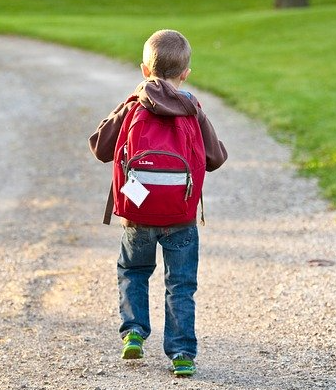Classroom Routines: Preparing Your Child with Autism
This resource was created as a supplement for the Language Builder: Academic Readiness Intervention System (ARIS) complete early autism curriculum, Lesson #79, Following a Schedule. Download a free copy of the lesson and learn more about the ARIS curriculum.
Preparing your child with Autism for classroom routines is important. Whether it’s the start of the school year, transitioning back to classes from school breaks, or a refresher, common classroom routines can be easily adapted to suit your child’s needs and practiced in and outside the classroom. It is helpful to meet with the teachers and therapists working with your child to understand what their daily schedule in school is like to make a plan for how your child can be supported and successful.
If your schools is using the Language Builder: Academic Readiness Intervention System (ARIS) there is a set of lessons that are designed to support students in learning classroom routine skills including all the following activities. ARIS is also available for home use. Here are a few free ARIS lessons to download that help you guide your child through practicing ARRIVALS and DEPARTURES.
Snack Time
Snack time is an opportunity for children to practice daily living skills and social skills. The child can be expected to participate in a group snack or meal, stay seated, use utensils as needed, and clean up. To prepare, all the materials the child may need should be accessible (meal, lunchbox, utensils, napkins, wastebasket, etc.). The child can be prompted, “Time for snack” and directed to the eating area. The child can be directed as needed to eat the items on the table. While eating, the child can be encouraged to demonstrate social manners, such as using proper utensils, wiping off messy hands or mouth with a napkin, etc. Some students may need physical prompting or assistance. When the child is finished eating, they can be prompted to clean their area and place trash into the wastebasket. Prompt the students to wash their hands before and after eating.
Washing Hands
Washing hands independently is an important self-care skill. The sink area should be set up with easy placement and access to soap and hand towels. It is important to make sure a footstool is available if the child needs it. Tape the Hand Washing pictures from the LB5 Language Builder: Sequencing Card Set on the wall to be used as a visual prompt for the child. Once the child is at the sink, prompt, “Wash hands.” The visual serves as a schedule to remind children to use soap, water, then dry their hands. Prompt as necessary. Hand Washing pictures from the Stages Learning Language Builder: Sequencing Card Set are available to help support your child in this and other skills.
Following a Schedule
 Following a schedule for classroom activities makes events more predictable for the student. Using a visual schedule reduces anxiety, supports independent time management, and can help with transitioning between activities. It is important to begin with a few scheduled items so the student is not overwhelmed at first. It is helpful to create a visual schedule with images of the activities your child will be doing or create a color-coded schedule that corresponds with color-coded school materials. When introducing your child to a schedule, simple prompts such as, “It’s time to check your schedule” will help remind them and reinforce the new routine.
Following a schedule for classroom activities makes events more predictable for the student. Using a visual schedule reduces anxiety, supports independent time management, and can help with transitioning between activities. It is important to begin with a few scheduled items so the student is not overwhelmed at first. It is helpful to create a visual schedule with images of the activities your child will be doing or create a color-coded schedule that corresponds with color-coded school materials. When introducing your child to a schedule, simple prompts such as, “It’s time to check your schedule” will help remind them and reinforce the new routine.
Arrival
Arriving to the classroom in the morning can be a busy time. Creating an arrival schedule to help aide your child’s transition into their school day can help reduce anxiety and maintain an organized day. Arrival schedules can be easily adapted to your child’s school or schedule. Once the child arrives to the designated arrival area, they can be expected to greet one of the school personnel in an appropriate manner for their communication skills. This is an important social skill. Next, a visual or written schedule should be available for the student to follow. The student should be directed to their schedule and assisted as needed.
Departure
 The end of the school day can also be a busy time. Creating a departure schedule will help aide your child’s transition into their afternoon activities and help stay organized. Departure schedules can be easily adapted to your child’s school or schedule. A visual schedule, written schedule, or social story can help maintain expectations of the child and help them learn their departure schedule. When it is the end of the day, a simple prompt such as, “It’s time to get ready to leave,” or “It’s time to pack up” will help the child recognize that it is time to do their departure routine. As the child leaves, they can be expected to say goodbye to one of the school personnel in an appropriate manner for their communication skills. This is an important social skill. The student should be directed to their schedule and assisted as needed.
The end of the school day can also be a busy time. Creating a departure schedule will help aide your child’s transition into their afternoon activities and help stay organized. Departure schedules can be easily adapted to your child’s school or schedule. A visual schedule, written schedule, or social story can help maintain expectations of the child and help them learn their departure schedule. When it is the end of the day, a simple prompt such as, “It’s time to get ready to leave,” or “It’s time to pack up” will help the child recognize that it is time to do their departure routine. As the child leaves, they can be expected to say goodbye to one of the school personnel in an appropriate manner for their communication skills. This is an important social skill. The student should be directed to their schedule and assisted as needed.
Circle Time
Circle time in the classroom is an important part of a child’s social development. During class, circle time allows students time to connect socially, preview their schedules for the day, and participate in activities. The circle time should be set up with a visual schedule for circle time activities and a highly reinforcing item for the student. It is helpful to include spot markers or carpet squares so students know where to sit. Seating can be made flexible for the child’s needs, using chairs, cushions, foam, etc. When ready, children can be prompted by saying, “Let’s do circle time.” To begin practicing a circle time routine, students can participate for shorter time periods to start, gradually adding on time. Students should have a visual schedule to aide them through circle time and be supported as needed.
Transitions - Activities
Students participate in a variety of activities throughout the school day. Transitions between these activities are important to help reduce anxiety and maintaining time management. While the child is engaging in an activity, give them a two-minute warning before they will be transitioning to the next activity. Using a visual timer may help children. When the two minutes are up, give the direction to move to the next activity, and provide a reinforcement reward for successful transitions. Simple prompting can be used as needed if the child is having difficulty transitioning. The time between transitions and amount of warnings given can be adapted as needed.
Transitions - Locations
During the school day, children will experience transitions to different locations of the within the school environment, indoor and outdoor. Preparing students for transitions between different locations is an important life skill. When preparing to transition, it is important to prompt the child that they will be leaving soon. A clock, timer, or verbal countdown will help prepare the child. A highly reinforcing item can be used as the child transitions locations.
Center Time
Learning centers are often set up in the classroom to provide spaces for different activities. Children should learn to engage in appropriate behaviors at learning centers set up in the classroom. In the classroom, a child can be simply prompted, “It’s time for learning centers,” “Let’s go find our learning center for today,” or “Let’s look at the schedule to see which center we need to go to next.” Once the child arrives at the center, they can be encouraged to engage and prompted as needed. The student should be positively reinforced for engaging in the activity. It is best to start with a one-student center before having the student engage with peers at the centers.
Classroom Tasks
When it’s time for classroom tasks, simple prompts such as “It’s time to do our classroom tasks,” “Let’s go find out which jobs we need to do for the class today,” or “Let’s look at the schedule to see which tasks we need to do before recess.” Types of classroom tasks will vary by classroom and child, so these prompts can be adapted as needed. Once the child has identified the classroom task, they can be encouraged to complete the task. Reinforcement can be used as the child completes the appropriate task.
Token Board
Token boards are a visual way for students to be reinforced for their work and earn rewards. The Language Builder ARIS Manual offers a token board template. Before introducing the token board, choose desirable reinforces and something that can be used as tokens, such as stickers, marker, or paper pieces that can be affixed to the board. Then, help the child choose what reinforcer they will be working for. It is helpful to also provide an image of the reinforcer for the child. Once the token board is ready, the child can practice earning tokens. Have the child complete simple, mastered tasks, then give them a token to place on the board. Prompt as necessary. Once the child fills their token board, they can trade it in for the desired reinforcer. Once the child is comfortable with the token board, it can be used while completing more difficult tasks.
Increasing Distance of Instructor
Learning to follow instructions, schedules, routines, classroom rules, and self-regulation with instructors at an increasing distance away. These are important skills that will help increase your child’s independence in the classroom. When in the classroom, once the child is engaged with an activity, they should be provided reinforcement. Then, the instructor should gradually increase their distance from the child, verbally prompting the child to continue as needed. Increasing distance from the student can start with one foot, slowly increasing the amount of distance as is appropriate for the child and situation.
This resource was created as a supplement for the Language Builder: Academic Readiness Intervention System (ARIS) complete early autism curriculum, Lesson #79, Following a Schedule. Download a free copy of the lesson and learn more about the ARIS curriculum.





